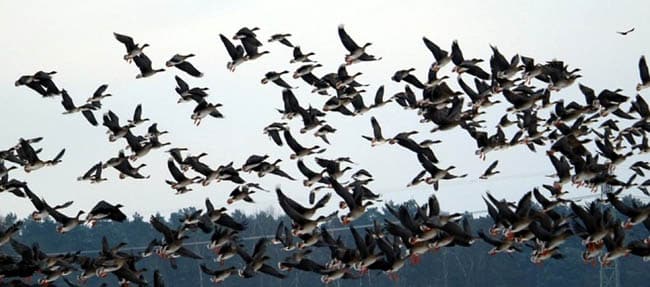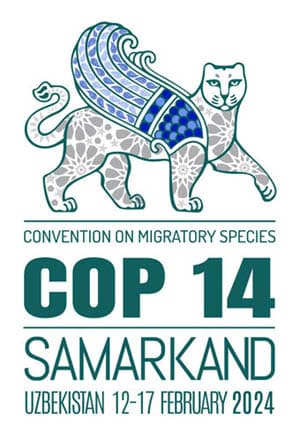
The first-ever State of the World’s Migratory Species report, launched at global conference of Parties to the UN Convention on the Conservation of Migratory Species of Wild Animals (CMS), reveals:
- While some migratory species listed under CMS are improving, nearly half (44 per cent) are showing population declines.
- More than one-in-five (22 per cent) of CMS-listed species are threatened with extinction.
- Nearly all (97 per cent) of CMS-listed fish are threatened with extinction.
- The extinction risk is growing for migratory species globally, including those not listed under CMS.
- Half (51 per cent) of Key Biodiversity Areas identified as important for CMS-listed migratory animals do not have protected status, and 58 per cent of the monitored sites recognized as being important for CMS-listed species are experiencing unsustainable levels of human-caused pressure.
- The two greatest threats to both CMS-listed and all migratory species are overexploitation and habitat loss due to human activity. Three out of four CMS-listed species are impacted by habitat loss, degradation and fragmentation, and seven out of 10 CMS-listed species are impacted by overexploitation (including intentional taking as well as incidental capture).
- Climate change, pollution and invasive species are also having profound impacts on migratory species.
- Globally, 399 migratory species that are threatened or near threatened with extinction are not currently listed under CMS.
Until now, no such comprehensive assessment on migratory species has been carried out. The report provides a global overview of the conservation status and population trends of migratory animals, combined with the latest information on their main threats and successful actions to save them.
Billions of animals make migratory journeys each year on land, in rivers and oceans and in the skies, crossing national boundaries and continents, with some travelling thousands of miles across the globe to feed and breed. Migratory species play an essential role in maintaining the world’s ecosystems, and provide vital benefits, by pollinating plants, transporting key nutrients, preying on pests, and helping to store carbon.
The main focus of the report is the 1,189 animal species that have been recognized by CMS Parties as needing international protection and are listed under CMS, though it also features analysis linked to over 3,000 additional non-CMS migratory species. Species listed under the Convention are those at risk of extinction across all or much of their range, or in need of coordinated international action to boost their conservation status.
Most worryingly, nearly all CMS-listed species of fish – including migratory sharks, rays and sturgeons – are facing a high risk of extinction, with their populations declining by 90 per cent since the 1970s.
Analyzing the threats to species, the report shows the huge extent to which the decline in migratory species is being caused by human activities.

The State of the World’s Migratory Species report will provide scientific grounding and policy recommendations to set the context and provide valuable information to support the deliberations of the UN wildlife conservation conference (CMS COP14) starting today in Samarkand, Uzbekistan.



